Financial
Universal Phone, Toncoin’s Web3 Smartphone, Pre-Sale Sells Out Instantly

The Universal Phone, a Web3 smartphone powered by Toncoin (TON), has generated remarkable excitement. Its pre-sale, announced by Web3 ecosystem Oyster Labs, sold out within seconds. This rapid response highlights the keen investor enthusiasm surrounding Toncoin’s entry into the mobile device market.
Why the Hype? Key Factors Behind the Sell-Out of Universal Phone
- Aggressive Pricing for Accessibility: Oyster Labs strategically priced the Universal Phone at just US$99 (plus US$30 shipping) to fuel mass adoption of the Toncoin ecosystem, democratizing Web3 technology, and opening access to a broader range of potential users.
- Toncoin Connection: The Universal Phone seamlessly integrates with the Toncoin blockchain, offering users unparalleled control over their data—a crucial advantage in AI-driven cryptocurrency projects. Besides, the device provides Web3 cashback, data dividends, and rewards, making it a powerful gateway to Ton-based Web3 projects and revolutionizing blockchain interaction.
Refund Process Underway
Oyster Labs has initiated refunds for some unsuccessful pre-sale purchases, which take an estimated five to ten days, with users receiving confirmation emails once complete, demonstrating a commitment to fairness for those who missed the initial pre-sale.
Market Impact: TON Price and Potential
The Universal Phone’s launch positively impacted TON’s price, which rose 6.9% to approximately $5.79 in 24 hours. Toncoin, with a fully diluted market value near $30 billion and roughly $226 million in daily trading volume, remains a Web3 leader. The surge in interest likely stems from increased awareness of Toncoin’s ecosystem and its potential.
Oyster Labs’ Vision: Accessibility and Mass Adoption
Oyster Labs’ affordable pricing strategy for the Universal Phone aligns with the broader aim of widespread Toncoin adoption within the increasingly competitive base layer industry. By expanding the potential user base, it opens the door for increased platform use and growth.
The Rise of Web3 Smartphones: A Paradigm Shift
The Universal Phone isn’t just another smartphone; it’s a catalyst for a significant shift in how we interact with decentralized technologies. Traditional smartphones, while powerful, are often tethered to centralized systems controlled by large tech companies. Web3 smartphones like the Universal Phone aim to break this mold.
By prioritizing data ownership, integrated cryptocurrency wallets, and seamless access to decentralized applications (DApps), Web3 smartphones offer a gateway to a more secure, user-centric internet experience, enabling individuals to take control beyond traditional devices.
Toncoin: More Than Just a Cryptocurrency
Toncoin (TON) stands apart from many other cryptocurrencies. It stems from the Telegram Open Network, a project initially envisioned by the founders of Telegram.
Toncoin boasts impressive scalability and transaction speeds, making it well-suited for the fast-paced demands of Web3 applications.
Moreover, Toncoin’s focus on user experience through features like user-friendly addresses and streamlined transactions aligns perfectly to make Web3 more accessible.
Universal Phone Use Cases: Beyond the Hype of Universal Phone
- Secure Financial Transactions: The Universal Phone’s native Toncoin wallet enables frictionless peer-to-peer payments and interactions with decentralized finance (DeFi) protocols.
- Data Sovereignty: Users can store sensitive information directly on the device with enhanced security, moving away from centralized data storage models.
- NFT Marketplaces: Imagine browsing, buying, and selling NFTs (non-fungible tokens) directly from your phone, opening new avenues for digital art and collectibles.
- Decentralized Gaming: Access blockchain-based games and rewards systems, potentially creating a new generation of play-to-earn experiences.
The Future: A Web3-Powered Pocket Revolution
The Universal Phone and the broader movement of Web3 smartphones (Solana Saga, Nothing Phone, and HTC Desire 22 Pro) hold the potential to make blockchain technology and its benefits really mainstream.
By blending the convenience of a smartphone with the power of decentralized networks, Web3 phones can accelerate the adoption of cryptocurrency, NFTs, and DApps.
Ultimately, this could lead to a more open, transparent, and user-empowered digital landscape.
Crypto
Theoriq Unveils Mainnet, Ushering In a New Era of AI-Driven Autonomous Finance
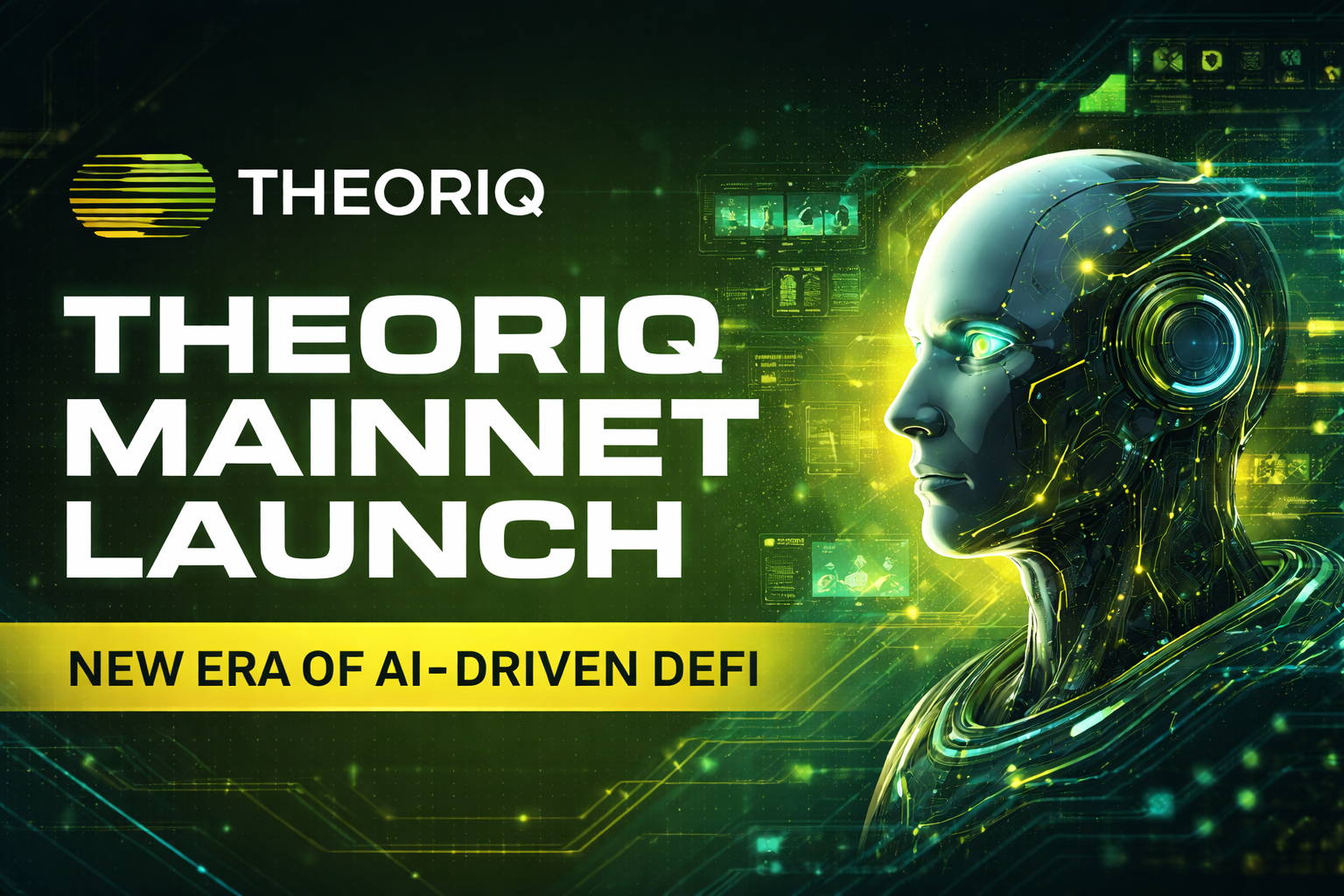
Theoriq has officially launched its Mainnet—an upgrade that may become one of the most important turning points in the evolution of decentralized finance. With this rollout, developers can now build, deploy, and scale autonomous onchain agents capable of executing real-time financial strategies, ushering in what Theoriq calls the future of AI-native programmable capital.
A Unified Infrastructure for AI-Native DeFi
Theoriq’s Mainnet brings together three critical components—agent logic, execution infrastructure, and liquidity—into one fully integrated, onchain environment. This marks a major leap forward from the fragmented tooling developers previously relied on when building autonomous DeFi automation.
With the launch of AlphaSwarm and AlphaProtocol, developers can now register verifiable AI agents, deploy autonomous strategies, and connect directly to decentralized capital sources, all within a unified system.
The Mainnet follows the strong performance of AlphaVault, Theoriq’s proof-of-concept vault that attracted over $21 million in TVL within four days, showcasing the appetite for agent-driven financial automation.
“The Mainnet creates a system where great AI agents can thrive, earn income, and help millions of people,” said Ron Bodkin, CEO and Co-Founder of Theoriq. “We’re building the infrastructure where autonomous intelligence meets usable, programmable capital.”
What Developers Can Do Starting Today
Theoriq’s Mainnet unlocks a suite of powerful capabilities:
Build & Register Onchain Agents
Using the Agent SDK, developers can:
- Create verifiable agent identities
- Register agents directly onchain
- Integrate seamlessly with AlphaProtocol
This ensures that agents are discoverable, verifiable, and securely connected to relevant contracts.
Access Capital & Execute Strategies
While advanced capital-routing features are still coming, the initial release already allows developers to:
- Coordinate strategies
- Deploy capital under controlled parameters
- Connect agents to DeFi protocols and liquidity sources
Operate Modular, Secure Intelligence
The Messaging Bus enables authenticated, tamper-resistant communication between agents and smart contracts — ensuring reliable execution for complex financial automation.
“Developers have been building amazing agents with nowhere to launch or monetize them,” said Jeremy Millar, Chairman of Theoriq. “Now they have a real onchain market—and users get AI that works for them, not just talks to them.”
THQ Staking Goes Live on Base
Alongside the Mainnet launch, Theoriq activated staking for $THQ, enabling participants to:
- Stake and receive sTHQ
- Contribute to network security
- Prepare for future governance utilities
Delegation is not yet active, but this staking layer establishes the groundwork for agent reputation systems and capital allocation models tied directly to agent performance.
A Step Toward Fully Autonomous DeFi
Theoriq’s Mainnet represents more than a technical upgrade—it’s a philosophical shift in how DeFi operates. Instead of manual user-driven strategies, Theoriq envisions a future where smart agents autonomously:
- React to market conditions
- Optimize liquidity
- Manage capital in real time
- Integrate across multiple chains and protocols
Pei Chen, Executive Director and COO of Theoriq, described the transition clearly:
“This isn’t just another upgrade. It’s the shift from manually operated DeFi to automated agent economies. We’re opening the door to a new frontier for DeFi.”
Backed by Leading Investors and Ecosystem Partners
Supported by $10.4 million in funding from notable VCs—including Hack VC, IOSG, HashKey Capital, and Foresight Ventures—Theoriq is positioning itself as a foundational layer for the next generation of AI-powered decentralized finance.
Its ecosystem partners include major players such as:
- Base
- Mellow
- Lido
- Uniswap
With Mainnet now open to developers globally, Theoriq is poised to become a leader in AI-native DeFi infrastructure.
Financial
PayPal’s Bold Move: A New Bank for Small Business Loans Could Transform Financing
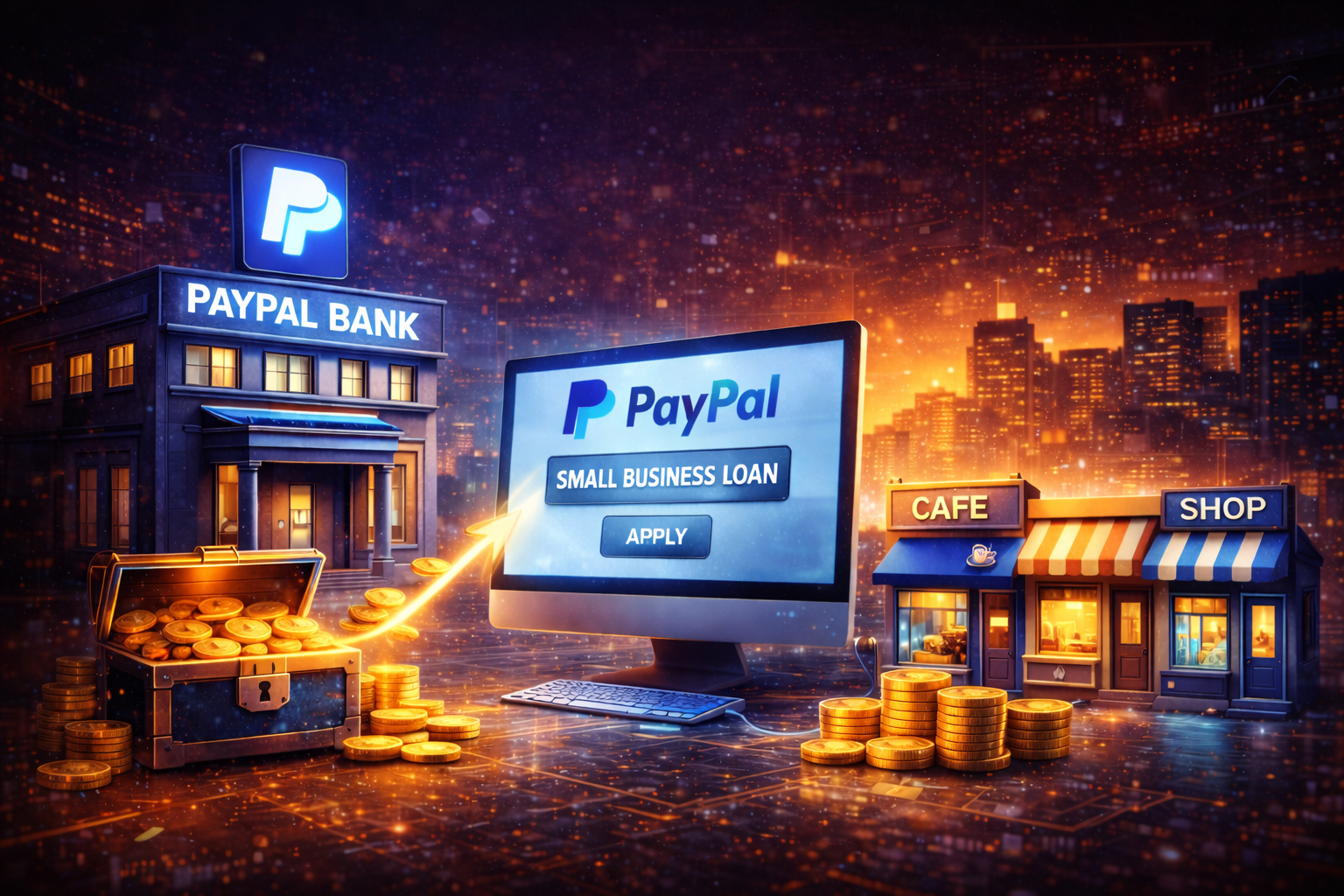
PayPal is taking a major step toward reshaping the future of small business finance. The company has officially applied to establish a dedicated U.S. bank designed specifically to originate and manage PayPal small business loans. This strategic shift signals a powerful evolution for the fintech giant, putting it in direct competition with traditional lenders while offering entrepreneurs a more modern, data-driven alternative.
What PayPal’s New Bank Means for Small Business Owners
PayPal has submitted its application to the U.S. Office of the Comptroller of the Currency (OCC). If approved, the institution will be focused exclusively on providing small business loans across the United States.
This would allow PayPal to originate, underwrite, and service loans directly—something it currently must do through bank partners. With complete control over the lending infrastructure, PayPal could offer faster approvals, more specialized loan products, and deeper integration with the existing PayPal business ecosystem.
For entrepreneurs, this means the potential to:
- Apply for financing directly inside their PayPal dashboard
- Access loans based on real PayPal sales data
- Receive faster decisions and more flexible credit options
For many small businesses that struggle to qualify for traditional bank loans, this represents a meaningful new source of capital.
Why PayPal Is Making This Strategic Shift Now
The timing of this move aligns with a major gap in the lending market. Traditional banks often view small business lending as risky and resource-intensive, leaving many entrepreneurs underserved.
PayPal, however, has access to years of real-time merchant transaction data, allowing it to evaluate creditworthiness with greater precision. By leveraging this advantage, PayPal aims to offer:
- Streamlined loan access with minimal paperwork
- Data-powered risk analysis that goes beyond credit scores
- A unified financial hub for payments, lending, and cash management
This evolution positions PayPal not just as a payments provider, but as a comprehensive business banking partner.
Challenges PayPal Must Navigate
Becoming a regulated bank introduces significant oversight and operational demands. PayPal will need to comply with strict capital requirements and supervisory expectations while preserving its fast-moving fintech culture.
Additional questions include whether:
- PayPal loans will be meaningfully better than existing lending options
- Merchants will trust PayPal as a true banking institution
- The company can balance innovation with regulatory obligations
Competition is also heating up. Square (Block) already operates a bank, and other fintechs are rapidly entering embedded finance.
A Glimpse into the Future of Business Banking
PayPal’s application marks a pivotal milestone for the future of embedded finance. It hints at a world where businesses manage payments, loans, and financial operations from the same digital platform they already use daily.
If approved, the PayPal small business bank could:
- Offer faster and more inclusive access to capital
- Redefine underwriting using real transaction data
- Push more fintechs to pursue similar regulatory pathways
This move could ultimately lead to a more agile, transparent, and digital-first financial system for entrepreneurs.
Frequently Asked Questions (FAQs)
Q: Has PayPal’s bank been approved yet?
A: No. The application has been filed with the OCC, but regulatory review may take several months or longer.
Q: Will this change PayPal’s existing loan products?
A: Potentially. The new bank could expand or absorb programs like PayPal Working Capital, offering new lending tools with more control.
Q: Is this bank for personal loans?
A: No. The bank is designed exclusively for U.S. small business lending.
Q: How is this different from traditional bank loans?
A: Expect faster decisions, online applications, and credit assessments based on PayPal sales data rather than just credit scores.
Q: Would funds held in this new bank be insured?
A: If approved, deposits would likely be FDIC-insured up to standard limits.
Q: What does this mean for competitors like Square/Block?
A: It increases pressure in the embedded finance space. PayPal is now following a similar path to Square’s bank charter, intensifying competition.
Crypto Currency
Spot Bitcoin ETFs Hit Sharp Reversal as $351.7M Exits the Market — Fidelity Leads Outflows

Major U.S. spot Bitcoin ETFs see a rapid sentiment shift as investors pull capital during heightened volatility.
The U.S. spot Bitcoin ETF market experienced a decisive pivot on December 15, marking one of its most significant outflow days in recent weeks. After a brief period of positive net inflows, regulated Bitcoin investment products saw a sudden $351.7 million exit, underscoring the speed at which sentiment can shift within the cryptocurrency investment landscape.
Massive Outflows Hit Spot Bitcoin ETFs
The downturn was led prominently by the Fidelity Wise Origin Bitcoin Fund (FBTC), which recorded a substantial $230 million in single-day outflows. The movement was far from isolated — several major funds saw similar redemptions, indicating broad market caution rather than a fund-specific event.
Breakdown of December 15 Outflows
- Fidelity FBTC: –$230.0M
- Bitwise BITB: –$44.32M
- Ark Invest ARKB: –$34.49M
- Grayscale GBTC: –$27.51M
- VanEck HODL: –$21.25M
While most funds faced redemptions, one outlier stood firm: BlackRock’s IBIT posted zero flows, indicating a neutral stance among investors during the selloff. Valkyrie’s BRRR was the only product to attract new capital, gaining $6 million in net inflows.
Why ETF Flows Matter for Bitcoin
Spot Bitcoin ETFs offer an essential real-time indicator of institutional and retail demand. Unlike futures-based alternatives, these products require the direct purchase or sale of Bitcoin to match fund issuance and redemptions, making them a strong proxy for capital entering or exiting the asset.
A net outflow event of this size:
- Signals increased short-term risk aversion
- Potentially applies downward pressure on spot Bitcoin markets
- Reflects shifting macro sentiment or profit-taking behavior
- Highlights diverging investor strategies across ETF issuers
Market Sentiment and Forward Outlook
The reversal serves as a reminder that Bitcoin ETF flows can be highly cyclical, influenced by macroeconomic news, liquidity conditions, and investor positioning. While outflows are not unusual, their magnitude can reshape near-term market dynamics.
Fund behavior also revealed key differences:
- Some issuers faced heavy redemptions
- Others maintained stable positioning
- A few saw continued niche inflow interest
This divergence underscores the importance of evaluating ETF flow patterns alongside Bitcoin price movements for a fuller market perspective.
Conclusion: A Developing Market Still Finding Its Rhythm
The $351.7 million withdrawal highlights the evolving nature of spot Bitcoin ETFs as they integrate deeper into traditional markets. Though these products provide regulated and simplified exposure to Bitcoin, they remain sensitive to broader shifts in investor sentiment.
As Bitcoin matures within financial markets, sharp inflows and outflows will likely continue to shape price behavior and institutional engagement. For investors, understanding ETF flow dynamics remains a vital tool in navigating the rapidly changing digital asset ecosystem.
-

 Crypto3 years ago
Crypto3 years agoCardalonia Aiming To Become The Biggest Metaverse Project On Cardano
-
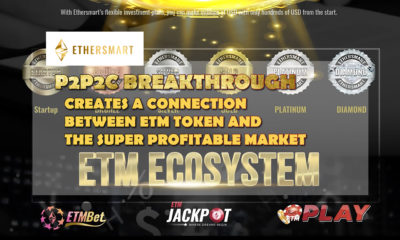
 Press Release5 years ago
Press Release5 years agoP2P2C BREAKTHROUGH CREATES A CONNECTION BETWEEN ETM TOKEN AND THE SUPER PROFITABLE MARKET
-
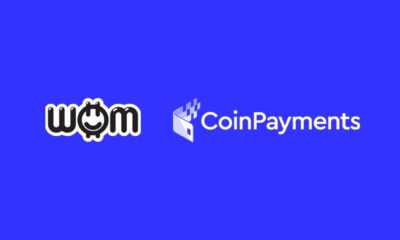
 Blockchain5 years ago
Blockchain5 years agoWOM Protocol partners with CoinPayments, the world’s largest cryptocurrency payments processor
-

 Press Release5 years ago
Press Release5 years agoETHERSMART DEVELOPER’S VISION MADE FINTECH COMPANY BECOME DUBAI’S TOP DIGITAL BANK
-
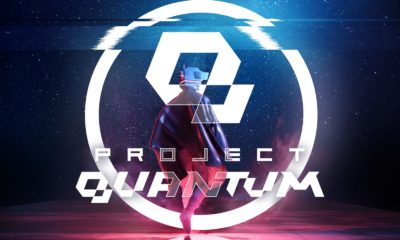
 Press Release5 years ago
Press Release5 years agoProject Quantum – Decentralised AAA Gaming
-
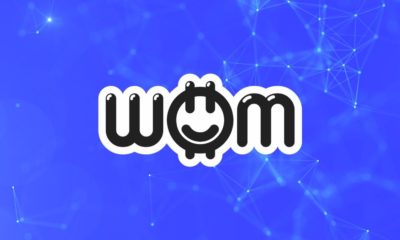
 Blockchain5 years ago
Blockchain5 years agoWOM Protocol Recommended by Premier Crypto Analyst as only full featured project for August
-

 Press Release5 years ago
Press Release5 years agoETHERSMART DEVELOPER’S VISION MADE FINTECH COMPANY BECOME DUBAI’S TOP DIGITAL BANK
-

 Blockchain6 years ago
Blockchain6 years ago1.5 Times More Bitcoin is purchased by Grayscale Than Daily Mined Coins






